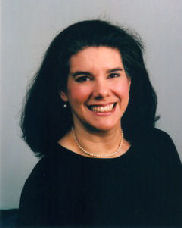GUEST AUTHOR:
Morgan Keyes
Please welcome author Morgan Keyes, author of the recently released fantasy DARKBEAST. Morgan and I share a love of theatre and history. Although the theatre in DARKBEAST is very different from the Crossroads, I know you'll enjoy discovering it.
Many thanks to Barbara for allowing me to visit and tell you about my middle grade fantasy novel, Darkbeast.
In Darkbeast, twelve-year-old Keara runs away from home rather than sacrifice Caw, the raven darkbeast that she has been magically bound to all her life. Pursued by Inquisitors who would punish her for heresy, Keara joins a performing troupe of Travelers and tries to find a safe haven for herself and her companion.
In writing Darkbeast, I finally got to use one of my dream real-world locations. Dream real-world? What does that even mean? To me, a "dream real-world location" is one of those places that I see, and I'm overwhelmed with awe, and I know that the place has some deep meaning, that I can fold it into a story, make it real in new and different ways.
Darkbeast's location is the Theatre Antique in Orange, France. I first saw those Roman ruins in 1989. At the time, the site was open to the public (in fact, it was - and is - used to stage some modern performances). But there wasn't any explanation of what one was looking at, at how the theater functioned (then or now), at what might have originally been set in the huge statuary niches, at why a marble Julius Caesar looks down from on high.
Skip forward, and I revisited Orange in 2007. Now, there is a recorded tour that tells visitors about Roman drama. There are signs that explain how productions were staged. There are explanations about how people crowded the stone seats, how staged plays were enjoyed by thousands.
My first visit planted a seed. My second visit watered and tended a young plant. And when I was ready to write the climactic scene of Darkbeast, I knew precisely where it would be set.
I wasn't a slave to archeology, of course. Darkbeast isn't a scholarly treatise on Roman theater. In fact, I created a warren of corridors beneath the stage, endless twisting hallways that confuse my nervous characters. (I say that I created those passages, but who knows? I've never actually been beneath the Orange stage. Perhaps the tunnels are there, exactly as I describe them!)
I replaced Julius Caesar, too, substituting gods and goddesses more appropriate to Keara's time and place. I added a pavilion in the audience, so that the Primate can watch the theatrical proceedings from a position of perfect comfort.
But really? I pretty much picked up the Theatre Antique wholesale and dropped it into Duodecia. When I wrote about it, I was able to revoke the heat of sunlight reflecting from the grey-white stone. I could summon up the spookiness of the dim arches, the cool, dark galleries that surround the seating area. Every single step that I climbed is translated into Keara's world.
Drawing on real-world places lends a certain weight to my made-up world. Because some elements of my story are absolutely, incontrovertibly real, other elements seem more anchored. Readers who have seen the Theatre Antique (or any other ruined Roman theater) can imagine more concretely the cath, the theatrical competition that drives Keara to succeed.
Of course, not all my readers will have had a chance to travel to Provence. As an author, I still need to describe the setting, still need to make it real for everyone who follows Keara's story. That need is even more imperative because Darkbeast is a middle grade novel; many of its readers won't have had a chance to travel far and wide. But I like to think that my real-world experience provides just an extra bit of "spice" for Keara's story.
Visit Morgan online at her website and on Facebook.
Look for DARKBEAST at your local bookstore or online
retailers
including Amazon,
B
& N and Indiebound.
Interested in hearing from another guest author?
Joshua Palmatier on
writing sequels.
D.B. Jackson on blending fantasy and history.



